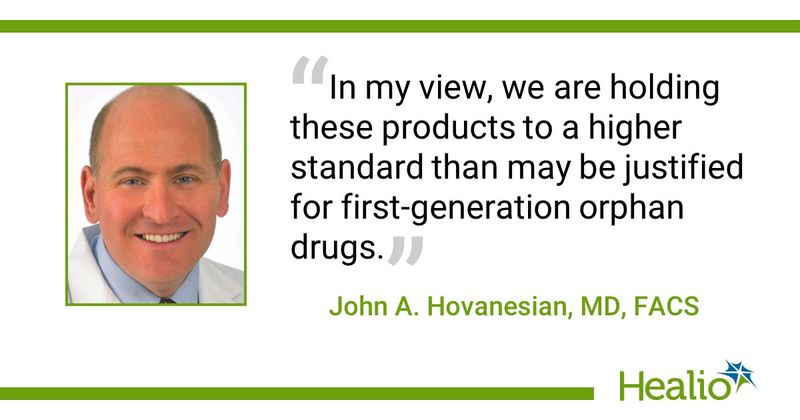BLOG: GA patients deserve better drug adoption
More than a decade ago, I told my wife’s grandfather that, despite all our advances in medicine, we didn’t have a treatment for his geographic atrophy.
I encouraged him to have hope for the future. Surely, I said repeatedly, some of the coming drugs will change your life, restoring confidence that you can have quality vision to read, see your great-grandchildren and enjoy your autumn years. Finally, this year, we have seen two approvals for drugs that treat geographic atrophy (GA), yet sales of both drugs have so far fizzled. Why is this happening, and shouldn’t we be using more of these products? The answer goes beyond just safety concerns, and in my view, we are holding these products to a higher standard than may be justified for first-generation orphan drugs.

The two approved drugs are both inhibitors of the complement pathway, Syfovre (pegcetacoplan injection, Apellis Pharmaceuticals), which was approved in February, and Izervay (avacincaptad pegol, Iveric Bio/Astellas Pharma), which was approved in August. A third treatment — a promising gene therapy under development by Novartis, GT005 — was abandoned following phase 2 data that didn’t support its continued development.
Safety first became a concern for Syfovre after its approval. Although the phase 3 OAKS and DERBY clinical trials showed no major safety concerns in 23,000 patients, about 5 months after approval, seven cases of panuveitis were reported to the Research and Safety in Therapeutics Committee of the American Society of Retina Specialists. More than half of those patients progressed to significant, permanent visual loss.
How high a real risk is this panuveitis to patients on Syfovre? About one in 10,000 if you consider that fewer than 10 cases have been reported in close to 100,000 patients who have received the drug. By comparison, the rate of infectious endophthalmitis following intravitreal injection for wet age-related macular degeneration is about 10 times higher, yet we consider that an acceptable complication rate. For the second GA drug, Izervay, panuveitis has not (yet) been reported, but much hesitation, probably somewhat unfairly, surrounds its adoption too.
The first non-safety-related headwind for these GA drugs has been how quickly and how well they work. In wet AMD, a drug response to anti-VEGF therapy may happen in just a few weeks, whereas in GA, it takes a year to see a response. (That’s not the drug’s fault. GA is a slowly progressive disease.) Furthermore, with anti-VEGF drugs, we define “success” as a dry macula, whereas the GA drugs call it a win when they merely slow down the disease’s progression by 20%. If you knew you had early Alzheimer’s, and a drug came along that slowed its progression by 20%, would you take it?
The second headwind is frequency of dosing. With wet AMD, treat and extend means decreasing the frequency of injections as long as the macula stays dry. Many patients need an injection only every 3 to 4 months. By contrast, with GA, everybody gets a monthly injection. That’s a daunting prospect for some retina specialists.
However well intentioned, they are already a bit overwhelmed with their saturated injection schedules. For patients, too, it’s a little daunting. As I have written before, some hesitant, aging patients with transportation problems are asking whether it’s better to “cross my heart and hope to die, or stick a needle in my eye.”
Finally, the cost of these drugs is a perceived barrier that shouldn’t really hinder their adoption. Medicare covers 80% of these drug costs, and according to multiple retina specialists I’ve communicated with, secondary coverage does not seem to be any more challenging than with anti-VEGF agents.
Almost every one of us with aging relatives has a sad story to tell about AMD. For me, it was watching my wife’s grandfather slowly lose his independence to GA. If he could live again, I would strongly encourage him to pursue these new drugs for hope of a better life. I salute our retina colleagues who can see past the challenges these drugs pose and do the same for their patients.
Follow @DrHovanesian on X, formerly known as Twitter.
Collapse
